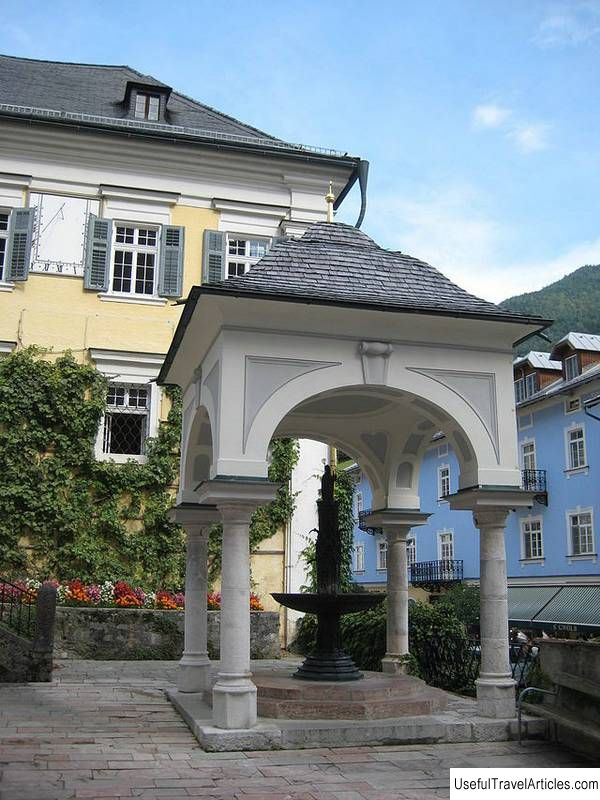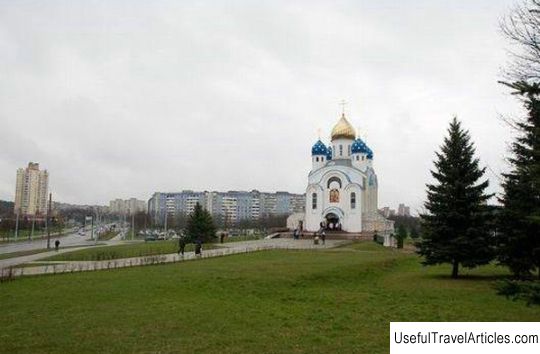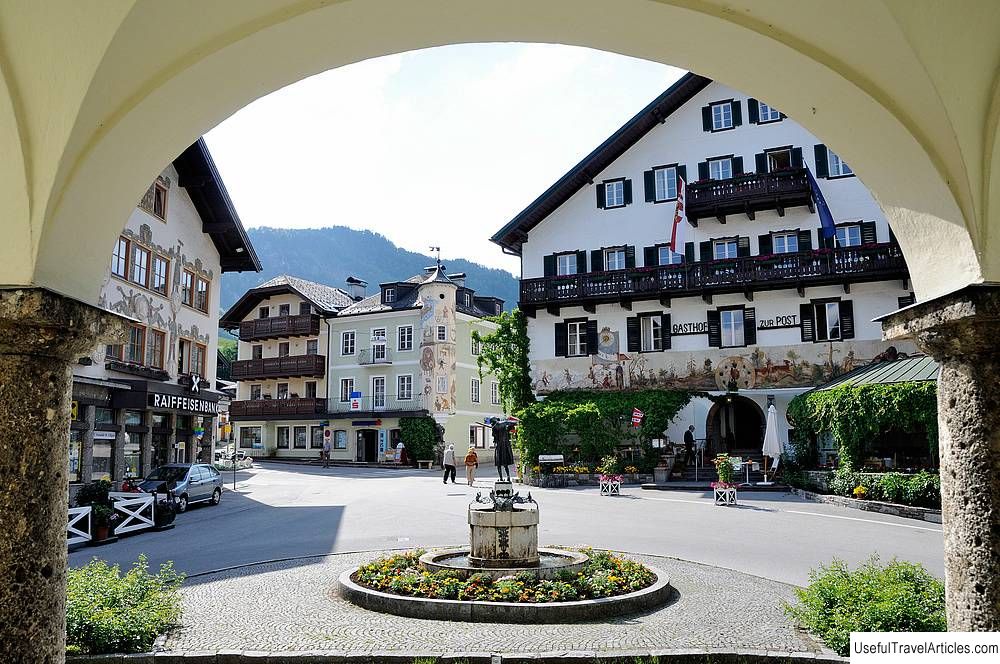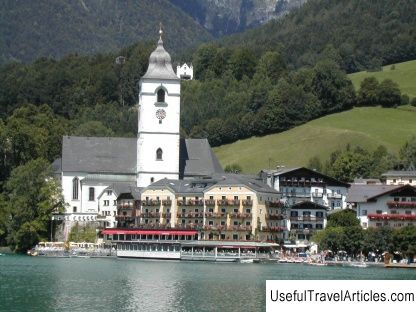Pilgrim fountain (Pilgerbrunnen) description and photos - Austria: St. Wolfgang

Pilgrim Fountain (Pilgerbrunnen) description and photo - Austria: St. Wolfgang. Detailed information about the attraction. Description, photographs and a map showing the nearest significant objects. The title in English is Pilgerbrunnen. Photo and descriptionIn the square in front of the famous St. Wolfgang Church, which houses the magnificent Michael Pacher altar dating from 1481, you can see the Gothic fountain of the pilgrims, or pilgrims. It is not much younger than the masterpiece in the church. The fountain was created in 1515 by two craftsmen, Rennacher and Milich from Passau. This well fountain was intended to supply water to the vicar of the church and the numerous pilgrims who have visited the city of St. Wolfgang since the 13th century. Two craftsmen made the bowl of the fountain from an old bell. Created during the Baroque era, the fountain looks more like a gazebo, whose roof is supported by four columns. The superstructure above the fountain is considered one of the first Renaissance buildings in Austria. The fountain is decorated with a statue of St. Wolfgang. Near the pedestal, you can see several reliefs, which depict a sea monster, with which brave warriors are fighting; four drunks after drinking and a sleeping nymph. The water from the fountain has long been considered miraculous, which only added to the popularity of the city of St. Wolfgang. At the beginning of the 16th century, the city was one of the most popular pilgrimage sites in Europe. In those days, in the square near the fountain, one could see crowds of pious believers with heavy penitential crosses and iron hoops around their necks. An inn was built for the pilgrims, which has not survived to our time. There were times when up to 20 thousand believers gathered here. During the Counter-Reformation, the number of visitors dropped sharply. And now only tourists come to the pilgrims fountain. which depicts a sea monster with which brave warriors fight; four drunks after drinking and a sleeping nymph.The water from the fountain has long been considered miraculous, which only added to the popularity of the city of St. Wolfgang. At the beginning of the 16th century, the city was one of the most popular pilgrimage sites in Europe. In those days, on the square near the fountain, one could see crowds of pious believers with heavy penitential crosses and iron hoops around their necks. An inn was built for the pilgrims, which has not survived to our time. There were times when up to 20 thousand believers gathered here. During the Counter-Reformation, the number of visitors dropped sharply. And now only tourists come to the pilgrims fountain. which depicts a sea monster with which brave warriors fight; four drunks after drinking and a sleeping nymph.The water from the fountain has long been considered miraculous, which only added to the popularity of the city of St. Wolfgang. At the beginning of the 16th century, the city was one of the most popular pilgrimage sites in Europe. In those days, in the square near the fountain, one could see crowds of pious believers with heavy penitential crosses and iron hoops around their necks. An inn was built for the pilgrims, which has not survived to our time. There were times when up to 20 thousand believers gathered here. During the Counter-Reformation, the number of visitors dropped sharply. And now only tourists come to the pilgrims fountain. p> The water from the fountain was considered miraculous for a long time, which only added to the popularity of the city of St. Wolfgang. At the beginning of the 16th century, the city was one of the most popular pilgrimage sites in Europe. In those days, on the square near the fountain, one could see crowds of pious believers with heavy penitential crosses and iron hoops around their necks. An inn was built for the pilgrims, which has not survived to our time. There were times when up to 20 thousand believers gathered here. During the Counter-Reformation, the number of visitors dropped sharply. And now only tourists come to the pilgrims fountain. p> The water from the fountain was considered miraculous for a long time, which only added to the popularity of the city of St. Wolfgang. At the beginning of the 16th century, the city was one of the most popular pilgrimage sites in Europe. In those days, on the square near the fountain, one could see crowds of pious believers with heavy penitential crosses and iron hoops around their necks. An inn was built for the pilgrims, which has not survived to our time. There were times when up to 20 thousand believers gathered here. During the Counter-Reformation, the number of visitors dropped sharply. And now only tourists come to the pilgrims fountain. In those days, on the square near the fountain, one could see crowds of pious believers with heavy penitential crosses and iron hoops around their necks. An inn was built for the pilgrims, which has not survived to our time. There were times when up to 20 thousand believers gathered here. During the Counter-Reformation, the number of visitors dropped sharply. And now only tourists come to the pilgrims fountain. In those days, in the square near the fountain, one could see crowds of pious believers with heavy penitential crosses and iron hoops around their necks. An inn was built for the pilgrims, which has not survived to our time. There were times when up to 20 thousand believers gathered here. During the Counter-Reformation, the number of visitors dropped sharply. And now only tourists come to the pilgrims fountain.     We also recommend reading Kideksha description and photo - Russia - Golden Ring: Suzdal Topic: Pilgrim fountain (Pilgerbrunnen) description and photos - Austria: St. Wolfgang. |




